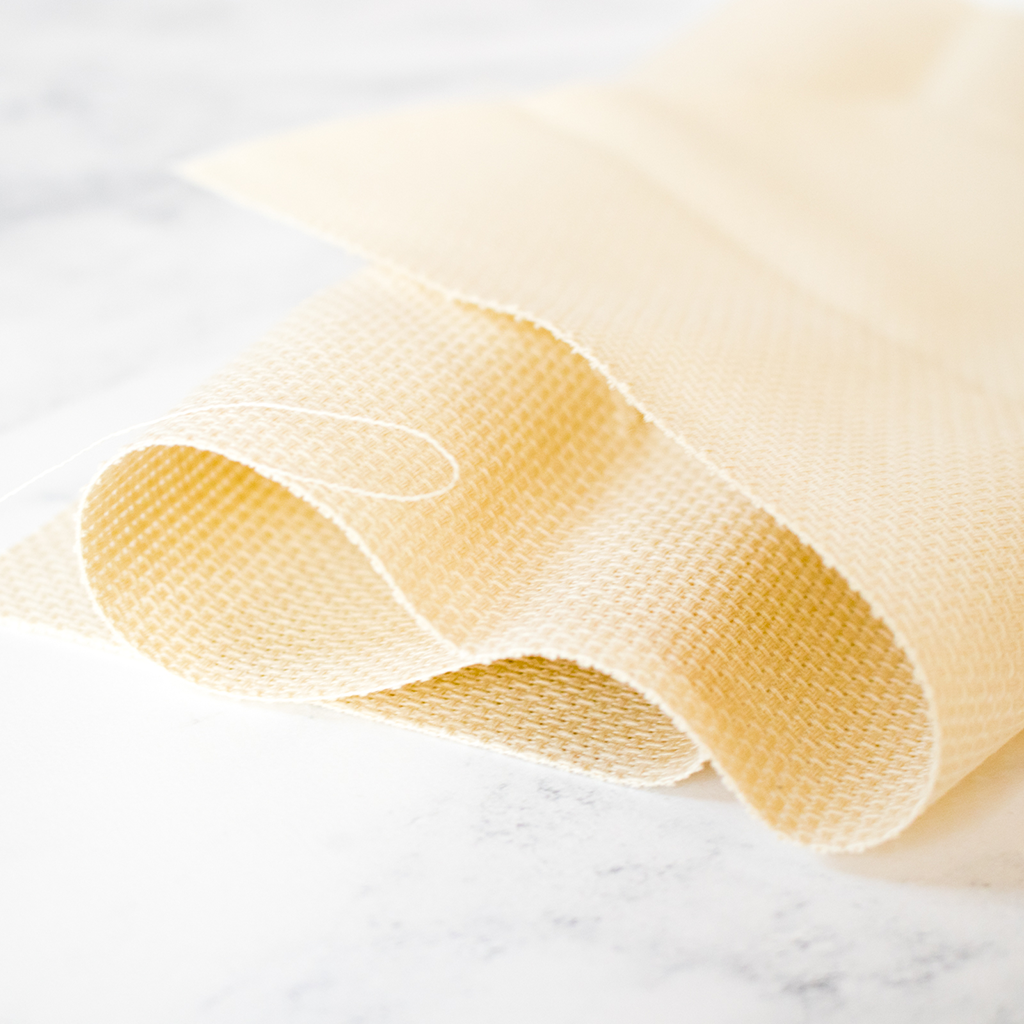
Metallic thread can add a lovely sparkle to all kinds of cross stitch and embroidery projects, but It can be a bit challenging to work with. It's slippery. It kinks and tangles. It frays like crazy. But don't let all that scare you. These tips will make it easier and give you the confidence to shine up your stitching.

1. Know your thread
There are lots of different types of metallic needlework thread on the market, but in this post we will focus on DMC Light Effects Metallic Floss because it is widely available and comes in a nice range of colors.
DMC metallic floss is a polyester/viscose blend. Like its cotton counterpart, the metallic floss comes in a skein and is made up of 6 strands that are divisible, meaning depending on the fabric you are stitching on, you can separate the strands and use what you need. When stitching on 14-count Aida or 28-count linen, two strands of DMC metallic floss usually provides the right coverage.
2. Use shorter lengths
Metallic thread can twist and tangle and fray. To minimize these problems, stitch with a shorter length than you might with cotton embroidery floss. In general, a length between 12 and 15 inches works well.
3. Use care when separating strands
Each strand in the 6-strand floss is itself made up of two threads twisted together. Because the metallic is more slippery than cotton floss, these two threads can become untwisted, and that can make the end of a length of floss a frayed and unruly mess.
When you are separating out a strand, make sure you are pulling its two twisted threads together, and not just separating out one of them. If in doubt, try trimming the end to a section that is not frayed.

4. Condition your thread
Metallic thread benefits from conditioning with a product like beeswax or Thread Magic. After you have separated out a strand, press and hold it lightly onto the surface of the beeswax or thread conditioner with your thumb. With your other hand, pull the thread to coat the length. Do this twice, pulling once in each direction. Run the thread between your fingers to even out the wax or conditioner.
You don't need to go overboard in conditioning the thread. You want a light coat, just enough to smooth the thread, but not enough to make it feel waxy.

5. Use this trick for threading your needle
If you take away only one tip from this post, let it be this one. When I learned this trick for threading my needle, it changed my whole relationship with metallic thread. It's that good.
The biggest challenge with metallic thread is that the ends fray. The fraying only gets worse as the thread repeatedly passes through your fabric. To eliminate this problem, cut a piece of floss that is twice the length you want to stitch with, and separate out a single strand.
Fold the strand in half, and thread the loop end through the eye of your needle. Pass the ends of the thread through the loop and tighten to form a knot. When you start stitching, secure the tail end under the first few stitches.

This threading technique has several benefits. First, passing the loop through the eye of the needle is easier than trying to coax the frayed ends through. Second, the knot keeps the thread securely on your needle as you stitch. Third, and most importantly, the ends of the thread are secured out of the way right from the beginning so there is no fraying to deal with. Genius!
6. Periodically untwist
While you are stitching, your fingers tend to twist the needle, and that can twist the thread and make it kink. From time to time, let your needle drop and hang free so the thread can untwist. This is good practice even when you are stitching with regular cotton floss.
7. Mix and match
You can use metallic thread all on its own for serious shine, or combine one strand of metallic with one strand of cotton floss for a more subtle shimmer. The color number on DMC metallic floss matches its closest cotton equivalent, which makes it easy to combine the two. For example, E3843 is a sparkly blue metallic that matches the DMC cotton floss 3843.

Use these tips to add a few metallics to your stash and start experimenting. Use just a bit to add a subtle sparkle to a project - think stars in the sky or other highlights. Or go for all over shine with a project like these ornaments that combine metallic thread with metallic perforated paper.




